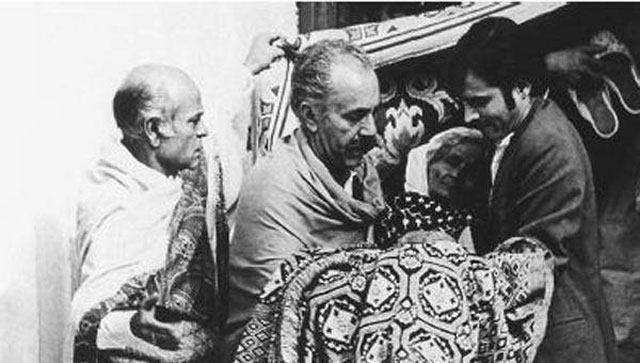M.S. Sathyu’s Garm Hava is a riveting portrayal of an Indian Muslim family’s troubles after partition, which interestingly become a mirror to the issues which several incoming refugees faced in the new nation.
As we celebrate the 75th anniversary of our independence, we solemnly remember that it also marks 75 years of the biggest human tragedy in this country, i.e., the partition. MS Sathyu’s Garm Hava remains a unique effort, studying the human cost of the issue, taking a look at a middle-class Muslim family which finds itself increasingly alienated in post-independence India.
The movie brilliantly portrayed the angst of a family which is slowly uprooted from its motherland, the dilemmas faced by them finding parallels in real historical events. Its strongest point remains that one is able to link up the trauma faced by the Mirza family (which wants to stay in India) to the pains of millions of Hindu and Sikh refugees who arrived into India.
The socio-economic questions for refugees, especially those arriving in places without suitable resettlement land were many including those of employment, home, and decent living conditions. These questions are faced by Mirzas as well, who lose their haveli to the Custodian, and find their employment opportunities increasingly shrunk. This leads to a massive drop in living conditions. In both scenarios (refugees and Mirzas), alienation is visible in the form of how ‘locals’ view them.
Interrelated and inalienable to the above is the identity crisis. Several refugees who came from Pakistan never wanted to leave and were literally uprooted in months of Sept-Oct 1947 because of the increasing violence. The aforementioned pressures force many members of the Mirza family to reconsider their positions, with some leaving for Pakistan, while others struggling in their beliefs of continuing a social struggle in India against a changed reality. Economics dictated a change in political positions for refugees (in the form of support for RSS and communists in different places of the country), and the same happens with some characters in the movie as well (a switch from Muslim League to Congress).
The movie handles an often overlooked question quite delicately. It is the cost which women had to bear during the partition. In reality, many were maimed, killed, kidnapped, violated, and later not accepted by their original families on either side of the border. Salim Mirza’s daughter Amna has her heart broken twice by men who make promises which they don’t keep, going to the other side and then forgetting her. Her emotional and physical trauma (and her eventual tragic demise) reflect the unspoken pain of many.
The creator’s idea behind the film was to bring Muslims into the mainstream (as reflected in the ending), and the same is successful when we realize that the plight of Mirzas is no different from that of millions who had to leave their lives in Pakistan.
Divy Tripathi is an independent journalist who writes about movies and cricket. He also tries his hand at fiction from time to time.
Read all the Latest News, Trending News, Cricket News, Bollywood News, India News and Entertainment News here. Follow us on Facebook, Twitter and Instagram.

